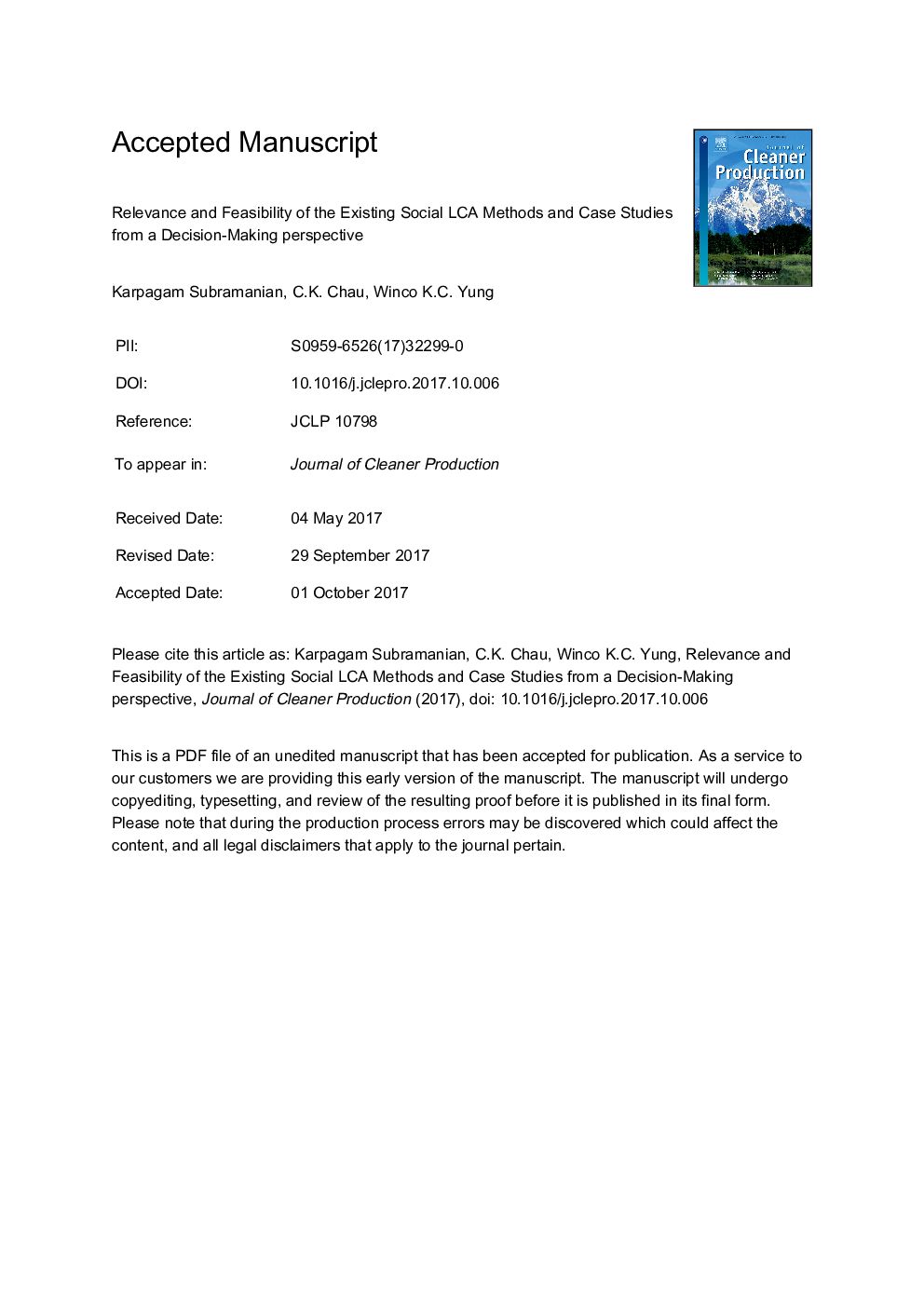| Article ID | Journal | Published Year | Pages | File Type |
|---|---|---|---|---|
| 8100229 | Journal of Cleaner Production | 2018 | 42 Pages |
Abstract
This paper explores the existing social life cycle assessment (SLCA) literature (theoretical and case studies) from decision making perspective. In order to tackle this, a critical review of 90 published work, including journal papers, conference proceedings and book chapters was undertaken. The selected articles were analyzed with a focus on methodological framework, boundary scoping, data inventories and practices. The analysis highlighted the inadequacies in the existing frameworks in terms of flexibility, conflicts in choosing and defining Area of Protection (AoP). Lack of consideration of social conditions of stakeholders in no-work and no-use phase, lack of inclusion of positive impacts, less attention to suppliers and consumers and choice of subjective indicators are highlighted as some weak portions within the boundary scoping. Less coverage of contextual and indirect indicators, and absence of documentation of a link between data collected (subjective indicators) and product activities are highlighted as a limitation within inventories, and finally within practices, lack of benchmarks is highlighted. This analysis highlighted an important differentiating factor between the actual definition of sustainability (maintenance of stocks for future generation) and the most common interpretation in literature as a summation of the three (social, environmental and economic) indices.
Related Topics
Physical Sciences and Engineering
Energy
Renewable Energy, Sustainability and the Environment
Authors
Karpagam Subramanian, C.K. Chau, Winco K.C. Yung,
